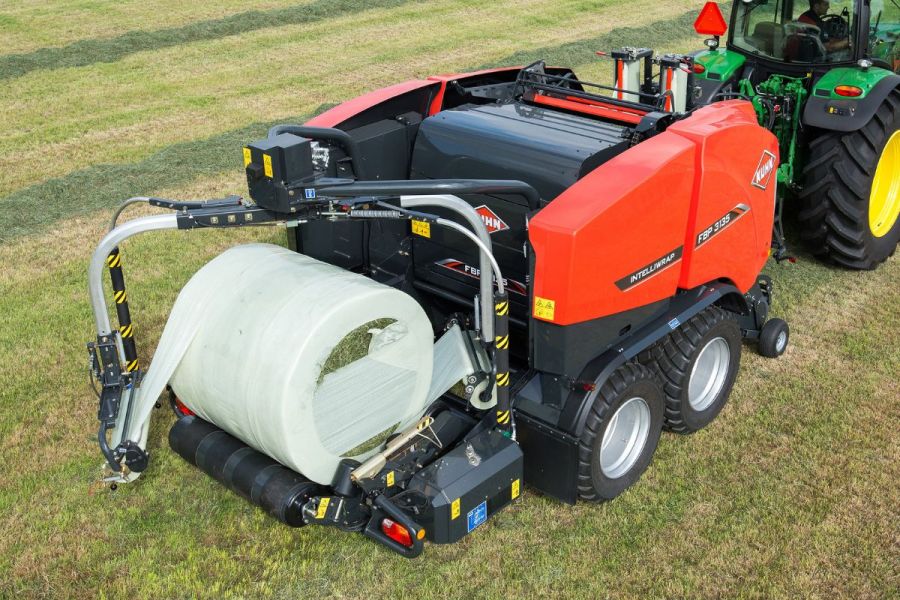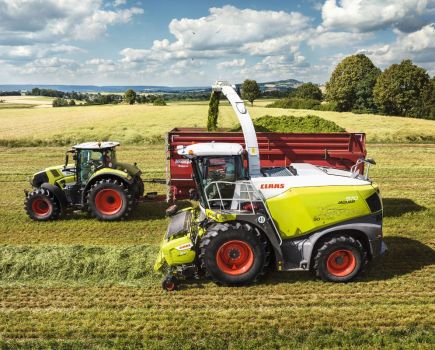Plastic use in modern farming is unavoidable – its uses are many and varied. But more often than not it isn’t recycled, creating a large and growing problem that one organisation is trying to tackle. CPM unravels the details.
“The cost of recycling currently lands entirely on farmers’ desks.”
By Melanie Jenkins
Plastic has almost become a dirty word in any industry, with pressure mounting to cut its use, increase recycling and take a conscientious approach to its disposal, but it’s far from a simple task in an agricultural setting.
While local councils are increasingly providing more household recycling, it’s neither a simple, easy or free process for farmers to dispose of their on-farm plastics in the most environmentally friendly and cost-effective manner. But one organisation is working to turn this around so that both the agricultural and horticultural industries can better manage plastic recycling post use.
Agriculture Plastic and Environment UK (or APE as it’s better known) is a not-for-profit organisation which is focused on improving the awareness of, access to and ability to recycle. “We’re supported and sponsored by the core plastics manufacturers, the three main agricultural distributors: Mole Valley, Wynnstay Agriculture and Carr’s Billington, as well as a few others,” says CEO, Ian Creasey.
Kuhn is the first manufacturer in the UK to sign up with APE, while as many as 14 others are in discussions to get involved. “If all of these manufacturers come on board it will cover more than 90% of the plastics used in UK agriculture. To their credit, they recognise that this is something they should be a part of.”
APE EU has existed in countries such as France for the past 18-20 years and Germany for the past decade, and so APE UK is following a model already established on the Continent, he explains. “Increasing agricultural plastic recycling in the UK is so important because Germany is recycling 70% of its agricultural plastics, France 75-80%, Scandinavia 80% and Ireland, where a legislative scheme is in place, manages above 95%. Whereas in the UK, despite past efforts to get this of the ground, levels are only at 25-30%.”
In its prior iteration in the UK, APE UK was established about four years ago with a view to collect a small levy from farmers at the point of purchase of plastics which supported the cost of recycling, but since then the organisation has been relaunched in its current format at LAMMA 2024. “We’re now focused on effectively supporting the sustainable use and recycling of agricultural plastics by building on the current sustainable farming initiatives, through government support and good farming practices,” he explains.
Over the next five years, the aim is to increase recycling in this country to 60-70%, says Ian. “To do this we have to focus on building awareness of the problem and create a consensus across the industry, from retailers to farmers, and all the different organisations in between, such as regulatory and environmental bodies as well as plastic and chemical manufacturers.”
The other critical aspect of APE’s role is to work with both central and devolved governments to articulate what has worked well in terms of recycling in other countries. “We’re not necessarily looking to push for legislation, but we want to help direct government to build a structure that’ll support the recycling of agricultural plastics and perhaps incentivise the process.”
So why does the UK have low levels of recycling and what can be done to make it more accessible for farmers?
The two key obstacles are the lack of available collectors in local areas, and the other is down to the cost, explains Ian. “In certain areas, any of the Scottish isles being an extreme example, but even parts of Lincolnshire that are less accessible, there aren’t nearby plastic collections. So the only way to remove plastic might be to arrange lorries to go around collecting it, and that adds pressure and cost.
“And the cost of recycling currently lands entirely on farmers’ desks, and this can be up to £150-£200/t. Relatively speaking, unless the farm is huge, it doesn’t usually equate to a massive cost, but it’s an inhibitor and naturally some will feel that it’s not their job to pay for it.”
If countries such as France and Germany are able to recycle such high quantities, how have this been achieved? “These countries have had their systems in place a lot longer than the UK, but the common theme is that there’s government legislation in place. In Ireland this takes the form of a levy added to the cost of every roll of film or bale wrap or sheeting, that goes towards the cost of recycling. In France and Germany the governments have supported recycling through means such as tax breaks.
These countries have also established successful ‘bring centres’ where farmers can take plastics on set days of the year, he says “These are well publicised and help to significantly reduce the cost to farmers as mass collection means the collector can work to the economies of scale when then taking the plastics to recycling centres. These are hosted in all sorts of locations including cattle markets, old quarries and on host farms.
“The key with all of this is that it makes it easier and cheaper for farmers, and it’s created market support that has changed the game in Europe,” says Ian. “So if we want this to work in the UK, we can’t expect it to be achieved entirely off the backs of farmers.”
Although bring centres already exist in the UK, these aren’t of a significant magnitude to deal with the issues of accessibility and cost, he admits. “But with the support of government and the industry working collaboratively, we hope that it’ll become easier to set these up and anticipate that a few pilot schemes may be run in the UK.”
Although APE’s remit isn’t to facilitate the physical collection of or recycling of plastics, it’s producing and distributing leaflets to provide information on how and where different plastics can be recycled locally, as well as best practice storage. “Just as with household waste, agricultural plastics should be separated into different sorts, for example plastic wrap and twine,” explains Ian. “It should also be kept dry and free from as much organic matter as possible because this can all make a significant difference to its recyclability and the cost recycling it.
“The cost of recycling agricultural plastics can be based on weight, so if you have a tonne of moisture and organic matter for every tonne of plastic you actually want to recycle, this will cost you a lot more. But if plastics are stored well and separated then it becomes both easier and cheaper to recycle them.”
As for what plastics can be recycled, Ian notes that most items are recyclable now, with storage and separation being the biggest inhibiting factors. “The rule with canisters is to triple rinse them and separate the can from the lid. The most difficult items to recycle are net wrap and twine because of their structure, but it’s still possible, whereas just three years ago it was almost impossible. But the most prevalent plastic items are plastic bale wrap and silage sheeting.”
Agricultural plastics play a vital role in regard to the sustainability of food, farming, animal and crop health, says Ian. “But to farm in a sustainable environment we must find a solution for them post use.
“If we don’t do something about this by ourselves, it’s still likely to find us one way or another. Whether that’s from retailers pushing to improve their Scope 3 emissions or being forced to by government legislation, which APE doesn’t necessarily favour as the preferable route.”
This article was taken from the latest issue of CPM. Read the article in full here.
For more articles like this, subscribe here.
Sign up for Crop Production Magazine’s FREE e-newsletter here.




